Jazz Pentatonic Scale: Killer Soloing Hacks
 Would you like to learn some neat jazz pentatonic scale hacks? You’re in the right place.
Would you like to learn some neat jazz pentatonic scale hacks? You’re in the right place.
In this lesson, you are going to learn pentatonic scale tricks that sound great in solos.
These hacks spice up improv lines. You can use them over many tunes.
Let’s go deeper into these jazz pentatonic scale hacks.
How To Play A Bluesy Jazz Pentatonic Scale Over Dominant Chords
 For some of you, the blues scale is a very familiar and safe tool for improv.
For some of you, the blues scale is a very familiar and safe tool for improv.
But what if you can twist it in a way that makes it sound more interesting?
The first pattern in this lesson is a minor pentatonic scale with the 5th flatted.
Root – minor 3rd – perfect 4th – flat 5th – minor 7th
If the first note of this pattern is C, this jazz pentatonic scale looks like this:
C – Eb – F – Gb – Bb
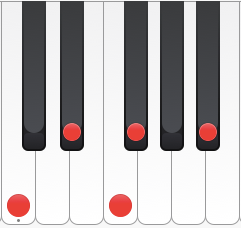
Take note of the scale formula. Apply this pattern over the root, 3rd, and 6th degree of any dominant 7th chord.
If you properly apply this hack to a C7 chord, here’s what you get:
Root: C – Eb – F – Gb – Bb

3rd: E – G – A – Bb – D
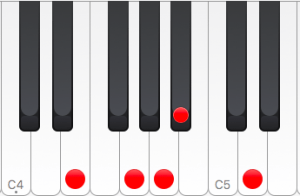
6th: A – C – D – Eb – G
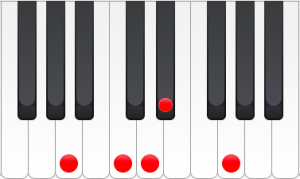
All of these scales sound really bluesy and great over dominant 7th chords.
These scale shapes also map out bigger scales in a musical manner. Find out how below.
How Jazz Pentatonic Scales Map Out More Complex Scales
Are you ready to have your mind blown with what you just learned?
Here’s what you get by combining all of the shapes we’ve talked about above:
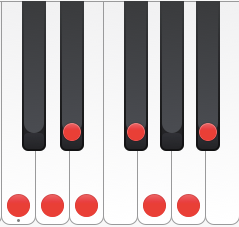
The scale you see above is a Lydian dominant scale with a b3. It’s what you can call a hybrid blues scale.
If you chop it up into pentatonic shapes, it makes more musical sense.
How you might ask? Here are some reasons:
- Pentatonic shapes outline basic chord tones plus an extension.
- Mixtures of intervals create interesting melodies.
- The minor and/or major 3rd intervals found in pentatonic shapes create excitement.
Let’s dig a lot more deeper into that.
Fact: Jazz Pentatonic Scale Shapes Provide Instant Access To Chord Tones
 Let’s examine our minor pentatonic with flat 5th shapes over the root, 3rd, and 6th of our C7 chord:
Let’s examine our minor pentatonic with flat 5th shapes over the root, 3rd, and 6th of our C7 chord:
- C – Eb – F – Gb – Bb are the root, b3, 11th, b5, and b7.
- E – G – A – Bb – D outlines a 3rd, a 5th, an 11th, a flat 7th, and a 9th.
- A – C – D – Eb – G are the 6th, root, 9th, b3, and 5th.
Now compare that to thinking in terms of 7-note scales (e.g. major scales, etc.):
- Because you’re only thinking in terms of 5 notes rather than 7, it’s easier to deal with “avoid” notes.
- Fewer note choices mean it’s easier to pick out what notes to play during improv.
- Instant access to chord tones means it’s easier to think about soloing patterns and licks.
Thinking of pentatonic scales this way is really powerful.
There’s another jazz pentatonic scale over a dominant 7th chord that gives off a different vibe. Discover that scale in the next tip.
Why Altered And Whole Tone Scales Are Easier Than You Think
 Do you ever get confused about how to apply the altered and whole-tone scales to a dominant 7th chord?
Do you ever get confused about how to apply the altered and whole-tone scales to a dominant 7th chord?
Here’s a really cool shortcut:
What you need to do is mangle those scales into a simpler pentatonic scale.
You can start with a practical example below.
Over a C7 chord, here’s your new pentatonic scale:
C – E – Gb – Ab – Bb
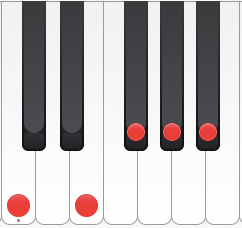
This is a scale I’d call altered dominant pentatonic. With this scale, you’re actually just…
- …a note away from a whole tone scale. In C, the whole tone scale spells C – D – E – F# – G# – A#. Take away the D, now you have the altered pentatonic scale.
- …two notes away from an altered scale. The altered scale in C is C – Db – Eb – E – Gb – Ab – Bb. Simply take away Db and Eb to get the same pentatonic scale.
Conversely, if you learn this altered dominant pentatonic scale, all you have to do is:
- …add a major 2nd to turn it into a whole tone scale.
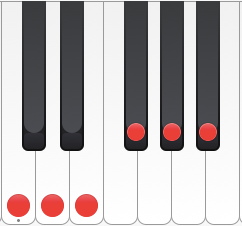
- …add a flat 2nd and flat 3rd to get an altered scale.
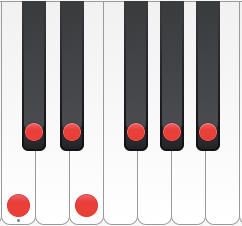
Here’s A More Mind-Blowing Shortcut To Learn Altered Scales In All 12 Keys
 Memorizing formulas can be hard.
Memorizing formulas can be hard.
It can be tedious to memorize all those scale formulas.
What if you can learn a cool shortcut for learning two amazing jazz scales?
Matter of fact is that you can.
Here are steps you can follow to learn altered dominant pentatonic scales (and altered scales) in all 12 keys:
- There are only 2 whole tone scale shapes. The 1st shape has C – D – E – Gb – Ab – Bb and the 2nd one has Db – Eb – F – G – A – B.
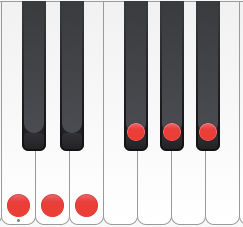
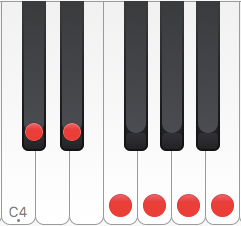
- Figure out the scale you need to learn by identifying the root first. As an example, learn the Bb altered dominant pentatonic. So, our root note is Bb.
- Choose the whole tone scale that contains Bb. Your set of notes should have Bb – C – D – E – Gb – Ab:
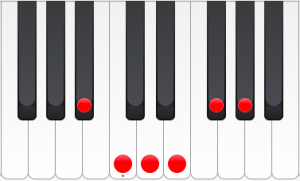
- Take out the C and you now have our altered dominant pentatonic scale in Bb (Bb – D – E – Gb – Ab).
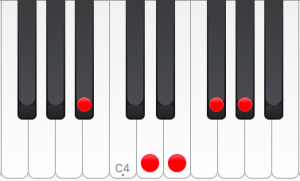
- Add Cb (a.k.a. B natural) and Db to get the Bb altered scale.
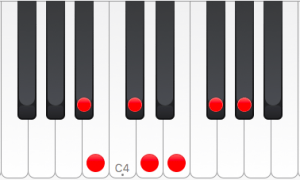
The next step is to learn your altered dominant pentatonic scale in all 12 keys. You’re now ready to cover more soloing ground over dominant 7th chords.
Super easy, right?
 Do you want to go even deeper? You can learn how to use more shortcuts like these through the Jazz Improvisation Super System.
Do you want to go even deeper? You can learn how to use more shortcuts like these through the Jazz Improvisation Super System.
Inside this course, you’ll discover David Garfield’s simple pentatonic patterns.
These allow you to play great sounding “side-stepping licks” without ever sounding like you’re hitting wrong notes.
Get instant access to the Jazz Improvisation Super System here.
Now that you have great pentatonic scale options for dominant chords, let’s cover major chords next.
How To Unlock Major Chord Soloing Options With A Simple Pentatonic Pattern
 Do find it hard to remember all sorts of scale formulas?
Do find it hard to remember all sorts of scale formulas?
If you have this problem, here’s a great solution: simply remember the minor pentatonic scale.
Over a major chord, you can apply minor pentatonic scale shapes over the 3rd, 6th, and 7th
Let’s see how this works over a Cmaj7 chord:
1. E – G – A – B – D
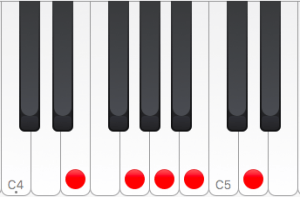
2. A – C – D – E – G
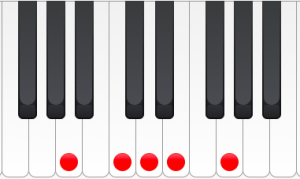
3. B – D – E – F# – A
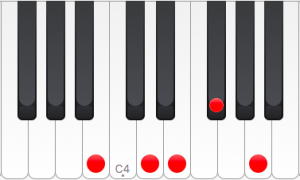
Here’s the big reveal: If you put all 3 pentatonic shapes together, it’s the Lydian Mode.
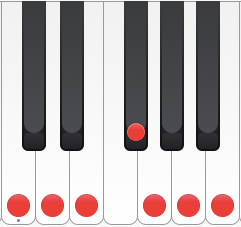
Now that you’ve learned how to play complex scales with simple shapes, how about trying to break down a scale using pentatonics?
1 Secret To Break Down Most Diatonic Scales
 At this point, you should have guessed it: The secret to breaking down many diatonic scales (i.e. 7-note scales with whole and half steps) are pentatonic shapes.
At this point, you should have guessed it: The secret to breaking down many diatonic scales (i.e. 7-note scales with whole and half steps) are pentatonic shapes.
Here are the steps to break down diatonic scales:
- Use only one pentatonic shape. In this case, let’s stick to minor pentatonic.
- Find all naturally occurring iterations of the pentatonic shape in the scale.
- Remember where you find the roots of each iteration.
Let’s test this concept out with the scale used over min7(b5) chords: Locrian.
Say we’re playing a tune in A minor, and so our ii(b5) chord, Bm7(b5), has B Locrian as the obvious scale choice.
B Locrian has the following notes: B – C – D – E – F – G – A.
Let’s form minor pentatonic shapes over each note of the scale:
- B – D – E – F# – A
- C – Eb – F – G – A
- D – F – G – A – C
- E – G – A – B – D
- F – Ab – Bb – C – Eb
- G – Bb – C – D – F
- A – C – D – E – G
Here’s what we now see on the list above: The only possible places for minor pentatonic shapes to play over B Locrian are on the 3rd, 4th, and 7th.
Memorize these spots and apply the minor pentatonic shape over them.
Apply the techniques above and you can master diatonic scales with simple shapes.
Now that you have cracked the code of the jazz pentatonic scale, how do you go further?
How To Get Your Jazz Piano Act Together
 Have you hit a wall in your piano playing? Struggling to learn jazz piano scales effectively?
Have you hit a wall in your piano playing? Struggling to learn jazz piano scales effectively?
Do you feel stuck in your old ways with boring scales and exercises?
You may have mastered how to play with accurate rhythm and pitch.
However, you still can’t play with the same impact as your favorite jazz legend.
If you want to bring your jazz playing to a higher level, you need a mentor.
You can get expert guidance through the Jazz Inner Circle.
The Jazz Inner Circle features world-class jazz piano pros with stage and studio experience. These instructors will help you learn the skills to captivate your audience and have fun making music.
 Inside the Jazz Inner Circle, you’ll discover:
Inside the Jazz Inner Circle, you’ll discover:
- Private 1:1 lessons with a Jazz Inner Circle instructor.
- “The Jazz Piano Mastery Program” (Over $25,000 worth of jazz piano training resources, tools, practice templates, improv strategies, & tons more.)
- “The Ultimate Jazz Workout Training System.” This is where we implement a complete practice program to build your jazz piano talent in record time.
- And more.
Get one on one training inside the Jazz Inner Circle here.
I hope that you enjoyed this lesson on jazz pentatonic scale hacks. If you have any questions, comments, or suggestions for new tutorials, feel free to leave a note in the comments section below.
With your new discoveries, it’s time to go to the piano and make some music.
